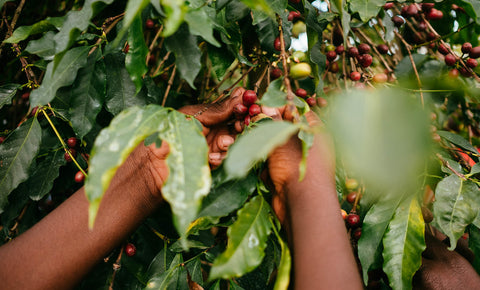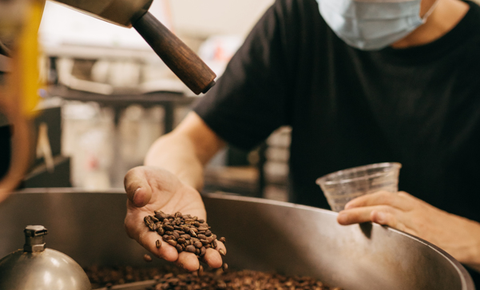
It doesn’t take much for a day to turn from smooth to turbulent when you’re working in a café. I guess it is just part of the rollercoaster ride that defines the hospitality lifestyle! one of the things that can start the slippery slope towards anxiety is a coffee pour that just doesn’t add up — or a question posed by a customer that you just can’t explain.
Here we’ll take a look at some typical espresso-related problems that can be easily solved by a bit of basic troubleshooting.
THIN ESPRESSO
- First check the roast date of your coffee. If your coffee was roasted more than three weeks ago, it will lack viscosity.
- Next examine your shot speed. If the shot is pouring too slowly, it will appear thin and oily. Remember, a coarser grind equates to a faster shot, and a finer grind is slower.
- How’s your volume? Remember that the end of the espresso is signified by the third colour change. If your shot is running past the end of the second change, you may need to adjust your volumetric settings.
- You may also need to check the temperature and pressure of your machine. This is easy to do on more modern machines. Generally the temperature will sit between 92C - 96C. Then there are the two pressure settings on your machine. One is the steam pressure which should sit between 1 - 1.5 bars and the other is the pump pressure which should be nine bars while it is pumping. (Don?t read it while the machine is idle, as you will only be reading the line pressure.)
CREMA
BUBBLY / QUICK DISSIPATION
- First take note of your coffee’s roast date. When coffee is roasted it produces carbon dioxide as a byproduct of the roasting process. If the roasted coffee is too fresh, you will experience a lot of bubbles or quick dissipation. Allow the beans a couple of days to settle and degas in order to obtain a more stable crema, however, keep in mind that coffee will go stale 21 days past the roast date. In addition, the longer you allow your coffee to de-gas, the more the flavour will be changed as well.
NO CREMA ON A LONG BLACK
- This can also be associated with quick dissipation, where the crema disappears quickly — see ‘Quick Dissipation’ above.
- If there is absolutely no crema, this can be caused by stale coffee. Again, check to make sure your coffee is within three weeks of its roast date.
- Evaluate how you are storing your coffee. Remember, it needs to be in a cool, dry place — not in excessive heat or in the refrigerator. Both of these will cause the immediate decay of your coffee.
- If you have a Synesso or Expobar, check that the brew temperature is correct. On the Synesso, it is easy to accidently switch off the black element breaker when cleaning underneath the machine, so make sure it is switched to the left.
- This is a bit of a weird one — but make sure you don’t have any detergent residue on your cups!
SHOT CHANNELLING
- Remember, the idea of an espresso coffee machine is for water to flow at proper pressure though a given amount of coffee. Shot channelling is when the water doesn’t have an even press through the coffee puck — it either goes around the coffee or through an easy path within the coffee puck.
- To evaluate the evenness of your extraction, the best tool is the Naked Portafilter, which enables you to analyse the flow of water through the coffee puck. (For more information on this, check out the Naked Portafilter story I wrote a while back.)
- Make sure you have the correct amount of coffee in the basket for your machine – the puck should be firm with a spongy surface.
- Ensure that the basket is not wet. Because the water coming from your machine will follow any damp path, a wet basket will encourage all of the water to go around the puck rather than through it.
- Your tamp needs to be level. Otherwise, all of the water will take the path of least resistance, which is through the thinnest part of your puck.
- Don’t tap on the side of your portafilter. Tapping on the side just makes your puck look pretty, it doesn’t make the coffee taste better. What you are risking is either breaking the seal of coffee with the edge of the basket or forming a crack through the centre of the puck, both of which will result in an uneven extraction.
EARLY BLONDING
- If your coffee blonds too early, you risk reducing the body and sweetness of your coffee, resulting in a bitter or ashy flavour.
- Stale coffee will also blonde early. Check your roast date and storage.
- Examine the speed of your pour. If your shot is too fast, the coffee will blonde sooner.
- Evaluate whether your shot is channelling — see ‘Channelling’ above.
- Check your machine temperature.
HARSH OR BITTER
- Make sure that your coffee is within three weeks of the roast date and that it has been stored correctly.
- Remember that the shot speed and the colour change of your coffee must always be accurate. A shot that is too slow or pulled too long will cause the coffee to turn bitter.
- Check that the temperature of your machine hasn’t changed.
SOURNESS
- This can be caused by coffee that is a little too fresh. Try aging your coffee for a couple of extra days (never longer than three weeks though) to stabilise your coffee.
- Check your shot speed — a fast shot can cause sourness.
- Make sure your temperatures are set correctly.
As you can see, most of these problems can be easily avoided with fresh coffee, proper storage, and adequate technique. The use of a temperature stable, multi-boiler machine is also important, for a single boiler heat exchange machine will naturally fluctuate in temperature and result in an inconsistent flavour. Multi-boiler machines are more stable and consistent with the water temperature they deliver.
If all else fails, give us (or your local technician) a call. When the problem goes beyond general troubleshooting, your technician will be able to make a more detailed assessment of things such as your pressure gauge and grinder burrs. It’s all in the pursuit of great coffee.
This article was originally published on the Five Senses Coffee website: Espresso Shot Troubleshooting.






